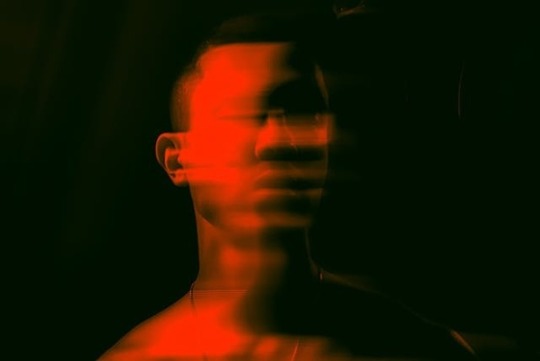#ManualPhotoEdits
Explore tagged Tumblr posts
Text
How to Combine AI Images with Manual Edits for Perfect Results

This is a quick insight from the article AI image editing originally published on April 06, 2025
AI image editing is wildly powerful. But let’s be honest, sometimes AI-generated images look... weird. Maybe it gave your model six fingers. Or added an extra eye. Or made a dog with human teeth (yikes).
That’s where manual editing comes in. AI can do the heavy lifting, but you need to polish the final result. The trick? Start with a solid AI-generated image and use smart editing techniques to refine it.
By the time we’re done here, you’ll know exactly how to fix AI-generated images, restore details, and make them look perfectly human-made. Let’s dive in.
Step 1: Get the Best AI Image First
AI loves to mess up tiny details. If your starting image is bad, fixing it will take forever. So, the first step? Generate the best possible AI image.
1. Choose the Right AI Tool
Different AI generators have different strengths:
✅ MidJourney: Best for artistic, detailed images
✅ DALL·E: Great for realistic images and structured compositions
✅ Stable Diffusion: Fully customizable, open-source
✅ Typeface AI: Optimized for product photography and branding
Pick the one that fits your project. If you want a high-quality product image, Typeface AI is a great choice.
2. Use a Strong Prompt
AI works best when given clear, detailed instructions. Compare these prompts:
❌ "A person standing on a beach."
✅ "A young woman in a white summer dress standing on a golden beach at sunset, waves crashing in the background, soft light reflecting on her face."
More details = better results.
3. Look for Common AI Mistakes
Before moving to edits, check for flaws like:
🚨 Extra fingers, missing limbs
🚨 Blurry text or gibberish writing
🚨 Unnatural lighting/shadows
🚨 Melting or distorted faces
If something looks way off, regenerate the image before wasting time fixing it.
Step 2: Fix Your AI-Generated Images
Now that you have a solid base, let’s fix those weird AI quirks. Typeface AI’s Image Studio makes this easy with specialized tools.
1. Remove or Edit Unwanted Elements
Did AI add a random floating object? Or a creepy extra eyeball? Use the “Erase” and “Inpaint” tools to fix it.
🔹 Erase Tool: Click on an object, remove it, and AI fills in the gap.
🔹 Inpaint Tool: Brush over an area, describe what should be there, and AI regenerates it.
For example:
✅ AI gave your model six fingers? Brush over the extra one, type “normal hand,” and boom—fixed.
✅ The background is too busy? Erase distractions and let AI smooth it out.
2. Adjust Lighting and Colors
AI lighting can be off. Shadows might not match, or colors would look flat.
Use Generative Lighting in Typefaces Auto-Edit:
(a) Brighten dark areas
(b) Enhance colors
(c) Adjust shadows for realism
Stat: 87% of consumers say lighting affects their perception of a product’s quality. A simple brightness tweak can completely change the image’s impact.
3. Fix AI Image Restoration Issues
If your AI-generated photo looks grainy, pixelated, or blurry, use AI images restoration tools to fix it.
Typeface AI has:
🔹 Auto-Restore: Enhances low-res AI images
🔹 Detail Refinement: Fixes blurriness and weird edges
🔹 Smart Upscaling: Converts images into high-res versions
This is especially useful if you’re editing old AI-generated photos or low-quality AI outputs.
Step 3: Correct AI Image Composition
Sometimes, AI almost gets it right… but the framing is off. Maybe your subject is cropped awkwardly or too close to the edge.
1. Extend or Reframe the Image
With Generative Extend (Outpainting), you can expand an image beyond its borders.
🎯 Need more space for a banner? Extend the background.
🎯 Want a square image for Instagram? Reframe it without cutting important details.
Pro Tip: Use grid overlays when extending images to keep compositions balanced.
2. Crop and Resize for Different Formats
AI-generated images don’t always fit standard social media sizes. Use Auto Crop to resize your image into:
(a) Instagram (square, 4:5)
(b) Website banners (16:9, 21:9)
(c) Ad formats (1:1, 9:16)
This ensures your AI-generated images look great everywhere without awkward cropping.
Step 4: Stylize and Finalize the Image
Now that your AI image is clean and well-framed, it’s time to add finishing touches.
1. Apply Filters and Effects
Typeface’s Effects Panel includes:
(a) Color grading: Adjust hues, contrast, and saturation
(b) Filters: Create specific moods (warm, cool, vintage, cinematic)
(c) Overlays: Add textures, light leaks, and artistic effects
This helps match the AI image to your brand’s style.
2. Add Text, Graphics, and Logos
Want to turn your AI image into a social media post or ad?
(a) Text Tool: Add captions, titles, and messages
(b) Adobe Express Integration: Apply professional design elements
(c) Brand Kit: Keep images consistent with your brand’s colors and typography
Final Step: Export and Share
Once your AI-generated image is polished and perfect, export it in the best format.
✅ PNG/JPEG: For web and social media
✅ WEBP: High-quality, smaller file size
✅ PSD: For further editing in Photoshop
And that’s it. Your AI-generated image is now flawless.
AI Image Editing: The Future is Here
AI-generated images are changing the way we create visuals. But no AI is perfect. The key is combining AI generation with smart manual edits.
By using tools like Typeface AI Image Studio, you can:
✔️ Fix your AI-generated images to remove weird details
✔️ Correct your AI images to improve composition, colors, and sharpness
✔️ Use AI images restoration to enhance quality
AI gives you the raw material. You add the final touch. And that’s how you get a perfect image, every time.
0 notes
Link
Photo Editing Manually vs. Editing With AI, Which is Better? - https://www.pixelproductionsinc.com/photo-editing-manually-vs-ai/ #photos #photoediting #manualphotoediting #photoeditingapps
0 notes